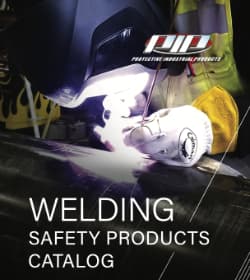WELDING PROTECTION: Does extreme cold affect welders?
Extreme cold can affect welders in a few ways. We have compiled a list of some of them along with steps how welders and employers can protect welders during cold weather. Keeping welders comfortable is not difficult with the proper equipment.

- Personal Health: Working in extreme cold can pose health risks to welders, such as hypothermia and frostbite. It's important for welders to dress appropriately for the cold and take frequent breaks in warm areas to avoid these risks.
- Material Behavior: Cold temperatures can affect the behavior of the materials being welded. Metals can become more brittle in extreme cold, which can affect the welding process and the quality of the weld. Welders may need to adjust their techniques and equipment to account for these changes.
- Equipment Performance: Welding equipment, such as welding machines and gas cylinders, can be affected by extreme cold. Some components may not function optimally in very low temperatures, and gases used in welding may behave differently. Welders should take precautions to protect their equipment and ensure it functions properly in cold conditions.
- Work Environment: Extreme cold can make the work environment more challenging for welders. Snow, ice, and freezing temperatures can create hazards and make it more difficult to work efficiently. Proper planning and preparation are essential to ensure a safe and productive work environment in extreme cold.
In summary, extreme cold can have various effects on welders, including impacts on personal health, material behavior, equipment performance, and the work environment. Welders and their employers need to be aware of these potential effects and take appropriate measures to mitigate the risks associated with cold temperatures.
Workers can take several steps to prepare for working in extreme cold conditions as a welder. Here are some important considerations:
1. Dressing Appropriately: Workers should wear suitable clothing for cold temperatures, including insulated, layered clothing that provides warmth and protection from wind and moisture. This may include thermal underwear, insulated jackets and pants, warm hats, gloves, and insulated boots. It's important to choose clothing that allows for freedom of movement and provides adequate protection from the cold.
2. Personal Protective Equipment (PPE): Welding PPE, such as helmets, gloves, and safety glasses, should still be worn in cold conditions. Special attention should be given to selecting PPE that provides necessary protection while also being suitable for cold weather. For example, insulated welding gloves can help protect hands while maintaining dexterity.
3. Equipment Maintenance: Welding equipment should be inspected and maintained to ensure it functions properly in cold temperatures. This may include checking welding machines, ensuring proper grounding, and protecting gas cylinders from freezing.
4. Hydration and Nutrition: Staying properly hydrated and well-nourished is important in cold conditions. Workers should drink plenty of fluids and consume warm, high-energy foods to help maintain body temperature and energy levels.
5. Work Scheduling: If possible, employers should consider adjusting work schedules to minimize exposure to extreme cold. This could involve providing more frequent breaks in warm areas or scheduling work during the warmest parts of the day.
6. Communication and Monitoring: Employers and workers should communicate effectively about the risks associated with working in extreme cold and monitor weather conditions closely. Having a plan in place for responding to changing weather conditions is essential for ensuring worker safety.
7. Emergency Preparedness: Workers should be trained in recognizing the signs of cold-related illnesses and injuries, as well as in how to respond to emergencies in cold conditions.
By taking these steps, workers can better prepare themselves for working in extreme cold conditions as welders, helping to ensure their safety and well-being while on the job.
For a complete in-depth understanding of which glove to choose for your industry click or download >>>
















